The Toyota Innova Crysta has been around since 2016 and is the undisputed king of the MPV segment, a position cemented by the original Innova back in 2005. The Crysta then upped the ante, offering a 2.7-litre petrol and two diesels, a 2.4-litre and a 2.8-litre, the latter getting an automatic gearbox. But the huge cost of upgrading to BS6 has forced Toyota to rationalise its engine line-up and, as a result, the powerful 2.8 diesel was dropped, and the 6-speed auto moved to the 2.4 diesel to supplement its 5-speed manual. With the less-powerful 2.4 diesel getting an auto for the first time, the first question on everyone’s mind is, how does it compare with the discontinued 2.8 diesel auto? Will it be a slouch or will it have enough grunt to do the job?
Let’s have a quick look at the specs first. With the 5-speed manual gearbox, the 2.4-litre engine makes 150hp and 343Nm of torque, exactly the same as the BS4 figures. But with the automatic gearbox, Toyota has upped the torque to 360Nm – identical to that of the larger 2.8-litre engine, although power is still down by 24hp.
What’s the BS6 Toyota Innova 2.4 diesel auto’s performance like?
For starters, the 2.4-litre engine feels a bit more refined at low revs, which enhances comfort levels, especially when cruising. The 2.4 AT also has a healthy amount of grunt at low and medium engine speeds. It doesn’t quite leap forward instantly when you tap the throttle like the 2.8 did, but it’s still quick to respond and pulls effortlessly. The 6-speed automatic is quick to shift gears and also responds fairly well to a kickdown, making it quite agreeable to drive in the city.
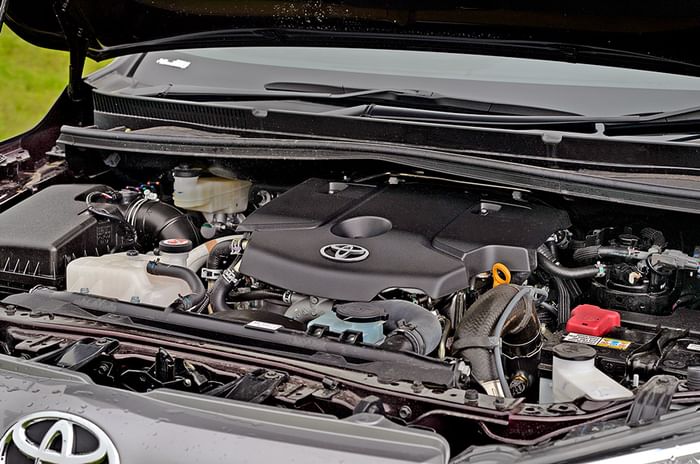
With its extra torque, the 2.4 AT also pulls forward smartly on open roads. It has a good reserve of performance, especially when you want to overtake at higher speeds, and on faster expressways, the Innova doesn’t feel out of breath either. It doesn’t quite push you back into your seat like the 2.8 did, however, nor does it have the same top-end performance. A quick test on a wet road showed the 2.4 AT did the 0-100kph sprint in 13.23sec; the 2.8 did it in just 11.46sec. The 2.8 also remains faster from 20-80kph and 40-100kph in kickdown, but by gaps of just 0.8sec and 1.16sec, respectively.
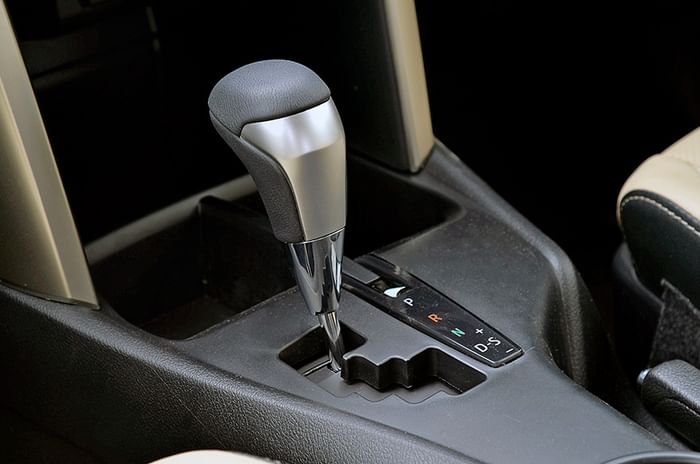
The 6-speed auto ’box has an ‘S’ mode which holds on to gears longer, adding to the driving experience on a faster road. Tapping the lever up or down from here activates a sequential manual mode, and once this is done, the gearbox won’t shift up automatically at the redline, like a proper manual.
| 2020 Toyota Innova Crysta BS6 2.4 diesel-automatic vs BS4 2.8 diesel-automatic performance (as tested) | ||
|---|---|---|
| Speed | BS6 2.4 diesel-AT | BS4 2.8 diesel-AT |
| 0-10kph | 0.75 sec | 0.42 sec |
| 0-20kph | 1.32 sec | 0.94 sec |
| 0-30kph | 1.97 sec | 1.63 sec |
| 0-40kph | 3.02 sec | 2.53 sec |
| 0-50kph | 4.14 sec | 3.64 sec |
| 0-60kph | 5.52 sec | 4.78 sec |
| 0-70kph | 7.28 sec | 6.18 sec |
| 0-80kph | 9.03 sec | 7.68 sec |
| 0-90kph | 11.12 sec | 9.57 sec |
| 0-100kph | 13.23 sec | 11.46 sec |
| 0-110kph | 15.52 sec | 13.63 sec |
| 0-120kph | 18.17 sec | 16.07 sec |
| 0-130kph | 22.68 sec | 19.30 sec |
| 0-140kph | 27.57 sec | 23.29 sec |
| 0-150kph | --- | 27.92 sec |
| 0-160kph | --- | 33.30 sec |
| 20-80kph (in kickdown) | 7.50 sec | 6.70 sec |
| 40-100kph (in kickdown) | 10.00 sec | 8.84 sec |
How does it achieve BS6 compliance?
The Innova now also gets emission control devices like a selective catalytic reduction (SCR) unit and a diesel particulate filter (DPF). The DPF can get clogged if the engine is only run at low revs, so the Crysta comes with a button that helps clean or ‘regenerate’ it. When the ECU senses the filter is blocked, the driver is alerted via a warning light on the instrument console and has to initiate a process (via a button on the lower dash) that involves a high-temperature burn. The engine is run at a high rpm when at a standstill, and this helps burn the soot and clear the DPF. This process, however, isn’t something that needs to be done regularly, and depends on usage patterns and ambient operating temperatures.
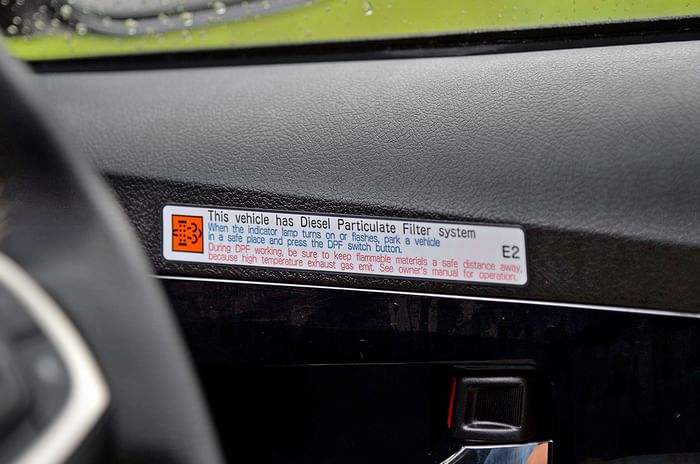
What else is new?
Apart from the updated engine and gearbox, the new BS6 Innova Crysta hasn’t really seen any other updates. The exterior is exactly the same with the large in your face grille flanked by a set of projector headlamps, the silhouette that we have become so familiar with and those iconic L shaped tail lamps that have been imitated in some form or the other by other MPVs too.
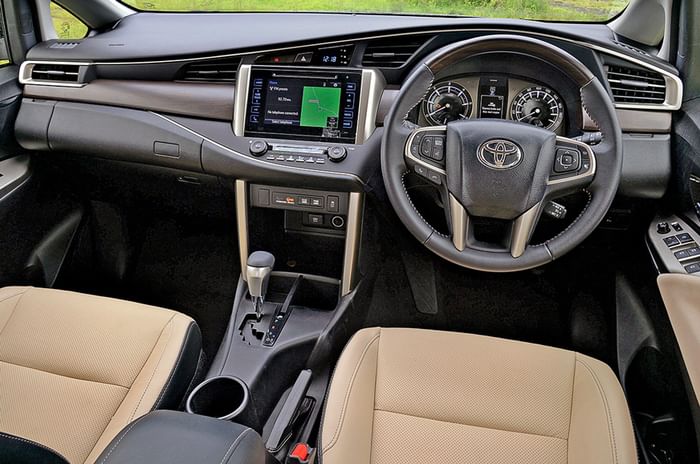
The interior is still the same too with plush seats and can be had in two colour options on the higher variants. Sadly, the touchscreen infotainment system still lacks features like Apple CarPlay and Android Auto and in a car that costs nearly Rs 30 lakh on road, this is a big miss especially since the standard user interface on the touchscreen isn’t something to write home about. As before, the Innova customer can choose between a 7-seat or an 8-seat layout, the former equipped with those comfortable captain’s chairs, while the latter gets a more practical bench.

The ride quality on the higher-spec models with 17-inch wheels is on the bumpy side and sharp edges shudder through. Also, the steering has a bit of kickback, especially through potholes. Overall, the Innova still offers a comfortable ride, especially on the lower variants where the 16-inch tyres have a taller sidewall, but the low-speed lumpiness, typical of body-on-frame vehicles, persists.
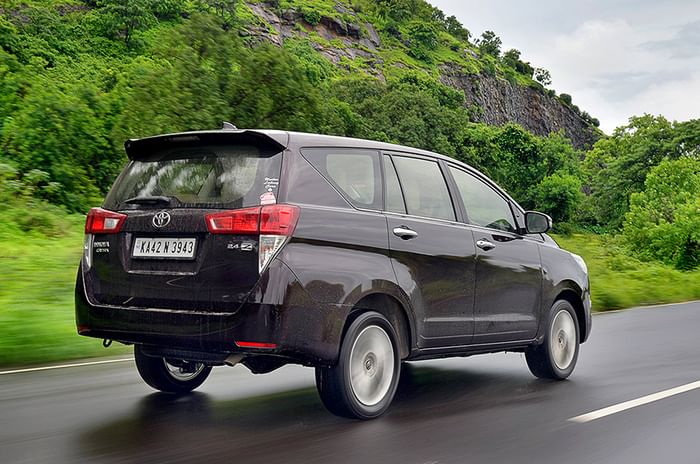
Verdict
On the whole then, the BS6 Innova 2.4-litre diesel mated to the 6-speed automatic gearbox is a high-quality and dependable package. The uprated engine is powerful enough, it is comfortable and plush on the inside, and the overall practicality it offers is hard to beat. Yes, it is a bit expensive at Rs 23.63 lakh (ex-showroom) for this top-spec version, but then it also enjoys an enviable reputation for mechanical robustness, reliability and dependability that very few can match.






































